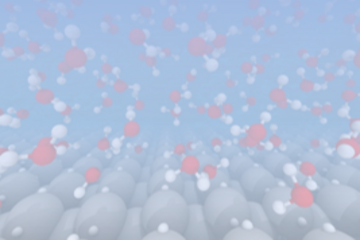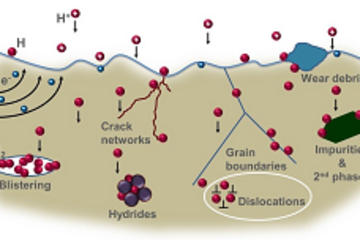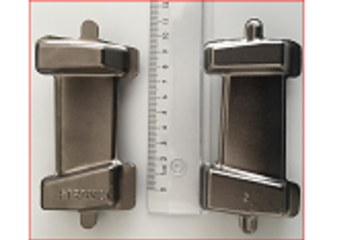All genres
321.
Talk
Nanostructuring 1 Billion Tons: Combining Rapid Alloy Prototyping, Multiscale Models, and Characterization for Advanced Manufacturing. 2nd World Congress on Integrated Computational Materials Engineering, Salt Lake City, UT, USA (2013)
322.
Talk
Das flexible Kristalplastizitäts-Modell ’DAMASK’. Institutssemniar Lehrstuhl für Werkstoffkunde und Werkstoffmechanik, Technische Universität München, Garching, Germany (2013)
323.
Talk
Polycrystalline Ice under Cyclic Loading Talk. DGM Arbeitskreissitzung Mikrostrukturmechanik, Osnabrück, Germany (2013)
324.
Talk
The general crystal plasticity framework 'DAMASK'. Institutsseminar, Institute of Materials Simulation, Department of Materials Science, University of Erlangen-Nürnberg, Fürth, Germany (2013)
325.
Talk
Advanced spectral methods to study mechanics of heterogeneous materials. SPP1420 PhD and PostDoc workshop, Darmstadt, Germany (2013)
326.
Talk
What contributes to the dislocation network stress driving continuum dislocation dynamics? Kolloquium der Forschergruppe 1650, Bad Herrenalb, Germany (2013)
327.
Talk
Multiscale Modeling in Materials Science. Max Planck Society, LeadNet Meeting: 2013: Cross-sectional Workshop I: 'The Concept of Change', Castle Waldthausen, Mainz, Germany (2013)
328.
Talk
A high-resolution look at crack tip deformation. DPG Frühjahrstagung, Regensburg, Germany (2013)
329.
Talk
A spectral method solution to crystal elasto-viscoplasticity at finite strains. "Textures, Microstructures and Plastic Anisotropy, a Tribute to Paul Van Houtte", KU Leuven, Belgium (2013)
330.
Talk
Spectral methods as a powerful alternative to FEM for high-resolution simulation of crystal plasticity. Mechanical Engineering Seminar, Michigan State University, USA, East Lansing, MI, USA (2013)
331.
Talk
A spectral method solution to crystal elastoviscoplasticity at finite strains. Plasticity ’13, The 19th International Symposium on Plasticity & Its Current Applications, Nassau, Bahamas (2013)
332.
Talk
Discrete Dislocation Dynamics Simulation of High Temperature Creep in Nickel-based Single Crystal Superalloys. MMM2012, 6th International Conference on Multiscale Materials Modeling, Singapore City, Singapore (2012)
333.
Talk
Combined Experimental and Theoretical Study on the Ductilizing Effect of Rare Earth Elements in Magnesium Alloys. MMM2012, 6th International Conference on Multiscale Materials Modeling, Singapore City, Singapore (2012)
334.
Talk
A dislocation dynamics study of dislocation cell formation and interaction between a low angle grain boundary and in-coming dislocations. 1st PRACE (Partnership for Advanced computing in Europe) Scientific Conference, Hamburg, Germany (2012)
335.
Talk
The general crystal plasticity framework DAMASK. Colloquium Materials Modelling / Werkstoffkunde und Festigkeitslehre at Institut für Materialprüfung, Stuttgart, Germany (2012)
336.
Talk
A Virtual Laboratory to Derive Mechanical Properties of Complex Microstructures. GLADD-Meeting, Aachen, Germany (2012)
337.
Talk
The general crystal plasticity framework DAMASK. Seminar Talk at ICAMS, Bochum, Germany (2012)
338.
Talk
A modular crystal plasticity framework applicable from single grain to component scale. TMS Annual Meeting, San Diego, CA, USA (2012)
339.
Talk
A nonlocal crystal plasticity model used to solve heterogeneous boundary value problems for 3D microstructures. 18th International Symposium on Plasticity & Its Current Applications, San Juan, Puerto Rico (2012)
340.
Talk
Dislocation-hexagonal dislocation network interaction in BCC metals. 18th International Symposium on Plasticity & Its Current Applications, San Juan, Puerto Rico (2012)








